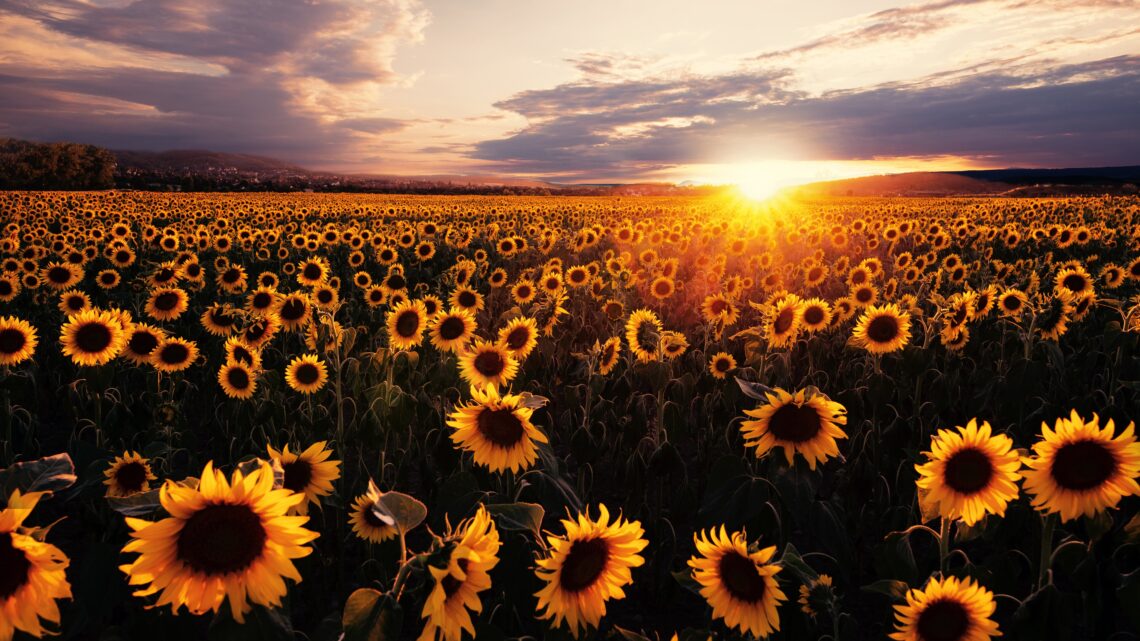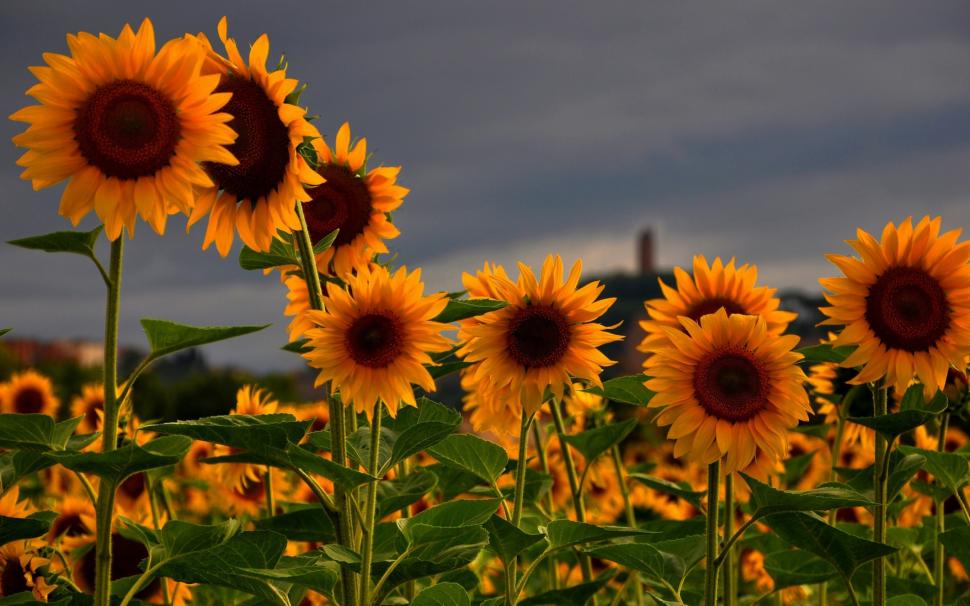
Sunflower Photoshoot: A Guide To Capture The Perfect Sunflower
A sunflower photoshoot is an excellent opportunity to capture stunning images and create memories that will last a lifetime. Sunflowers are a symbol of beauty, happiness, and optimism. With their bright yellow petals and tall stature, sunflowers have captured people’s hearts for centuries. As a subject for photography, sunflowers offer a unique and captivating beauty that is hard to resist whether you’re an amateur or professional photographer. According to research, Sunflowers are good to sell at a farmer’s market. Growers say that 90% of the flowers they send out are sold within four days.
This guide is designed to help you tame the perfect sunflower photo shoot. We will cover all the essential aspects of sunflower photography, including preparation, setting up the shot, capturing the perfect shot, and post-production.Whether you’ve been taking pictures for a long time or are just starting out, this guide will help you get the best sunflower photos.
With its comprehensive and easy-to-follow information, you’ll be well on your way to capturing stunning sunflower photos that you’ll be proud to share with the world.
Importance of Sunflower Photoshoot
- Sunflower photoshoot is important as it provides a platform to capture the beauty and essence of sunflowers in photographs. Sunflowers are not only attractive and eye-catching, but they also hold significant meaning and symbolism. Capturing sunflowers in photographs can profoundly impact the viewer, evoking happiness, hope, and positivity.
- Sunflower photoshoot has numerous benefits, both personal and professional. On a personal level, sunflower photos can serve as beautiful keepsakes, capturing memories and moments that will last a lifetime. On a professional level, sunflower photos can be used for various purposes, such as creating beautiful wall art, advertising products or services, or selling stock photos.
- Furthermore, a sunflower photoshoot offers a great opportunity to hone your photography skills and experiment with different learn techniques and styles. With their bright yellow petals and tall stature, sunflowers provide a unique and captivating subject for photography, allowing photographers to challenge themselves and push their creativity to the next level.
- Sunflower photoshoot is an important aspect of photography that provides an opportunity to capture the beauty of sunflowers and create memories that will last a lifetime. Whether you’ve been taking pictures for years or just started, a sunflower photoshoot is a great way to hone your photography skills and create beautiful photographs that you’ll be proud to share with the world.

Sunflower Photoshoot: The beauty and versatility of Sunflowers as a subject for photography
- Sunflowers are one of the most versatile and beautiful subjects. With their bright yellow petals and tall stature, sunflowers offer a unique and captivating beauty that makes them an ideal subject for capturing stunning images.
- One of the reasons why sunflowers are so versatile as a subject for photography is their versatility in size and shape. Sunflowers come in various sizes, from tiny dwarfs to giants that can reach up to 20 feet tall, providing a range of options for photographers.
- Furthermore, sunflowers are incredibly photogenic, with their bright yellow petals, dark centres, and dramatic shapes. They are perfect for capturing in close-up shots, showcasing their intricate details and beauty, or in wide shots, showcasing their grandeur and impact.
- Another reason sunflowers are such a popular subject for photography is their symbolism. Sunflowers symbolize happiness, hope, and positivity, making them a great subject for capturing images that evoke positive emotions. They are often used in photography to express joy, optimism, and positivity, making them ideal subjects for capturing memories and moments that will last a lifetime.
- Sunflowers are an incredibly versatile and beautiful subject for photography. With their versatility in size, shape, and symbolism, sunflowers offer a unique and captivating beauty that makes them an ideal subject for capturing stunning images that evoke positive emotions and memories that will last a lifetime.
Choosing the Right Location for Sunflower Photoshoot
When choosing a location for a sunflower photoshoot, there are several factors to consider:
1- Availability of sunflowers:
Sunflowers typically bloom from late spring to early fall, so selecting a location with sunflowers in bloom during your desired shooting time is important.
2- Accessibility:
Choose a location that is easily accessible for you and your clients. This can include proximity to major roads or highways, parking availability, and facilities such as restrooms.
3- Lighting:
Sunflowers typically face the sun, so it’s important to consider the direction and quality of light when selecting a location. Late afternoon or early morning light can provide beautiful, warm tones for your photoshoot.
4- Background:
The background of your photoshoot can greatly impact the final result. Consider factors such as the surrounding landscape’s colours, patterns, and textures to create a visually appealing background for your sunflower photos.
5- Privacy and Permits:
If the sunflower field is on private property, secure permission to use it for your photoshoot. Some locations may also require permits or fees, so it’s important to research and plan accordingly.
The best time to visit sunflower fields is during the peak of their bloom, which varies depending on the region and climate. Late summer or early fall is common for sunflowers to bloom fully, so this is a good time to plan your photoshoot.
Equipment needed for Sunflower Photoshoot
The equipment needed for a sunflower photoshoot typically includes the following:
1- Camera:
A digital camera with manual control options, such as a DSLR or mirrorless camera, is ideal for a sunflower photoshoot.
2- Lenses:
A macro lens is ideal for capturing close-up shots of the sunflowers, while a wide-angle lens can capture the entire field in a single shot.
3- Tripod:
A sturdy tripod will keep your camera steady and reduce camera shake, especially when shooting in low-light conditions.
4- Extra Batteries:
You should bring extra batteries for your camera just in case they die during the photo shoot.
5- Reflector:
A reflector can add light to the shadows and create a more even exposure.
6- Flash:
If shooting in low light conditions, a flash can add light to the scene.
7- Memory Cards:
Bring enough memory cards to store your photos.
While this equipment is optional for every sunflower photoshoot, it can help you achieve better results and create more professional-looking photos.

Clothing and accessories to wear For Sunflower Photoshoot
When it comes to clothing and accessories for a sunflower photoshoot, it’s best to dress comfortably and keep your outfit simple and neutral. Some tips for what to wear include:
1- Clothing:
Wear comfortable, breathable clothing in neutral colours, such as beige, brown, or navy. Avoid wearing bright colours or patterns that could clash with the sunflowers or distract from the subject.
2- Footwear:
Wear comfortable shoes that you can walk in, such as sneakers or hiking boots. Remember that you may be walking through fields and tall grass, so consider wearing shoes that provide good support and protection.
3- Accessories:
Keep accessories simple and minimal. A hat or sunglasses can protect you from the sun, and a camera strap can help keep your camera secure while you move around.
Remember that the focus of the photoshoot should be the sunflowers, not your outfit. Keeping your clothing and accessories simple and neutral will draw less attention to yourself and let the sunflowers take center stage.
Angles to consider for Sunflower Photoshoot
When shooting sunflowers, there are several angles to consider to create unique and interesting images:
1- Eye-Level:
Shooting at eye level is a classic approach that can be very effective. This angle provides a balanced perspective and can give the viewer a sense of being surrounded by flowers.
2- Above:
Shooting from above can create a bird’s-eye view that provides a sense of the scale and scope of the sunflower field. This can be achieved using a ladder, drone, or climbing a hill or building.
3- Below:
Shooting below the sunflowers can create a dramatic and interesting perspective. This angle can also be used to emphasize the size and shape of the flowers.
4- Close-up:
Close-up shots of individual sunflowers can effectively highlight the flowers’ intricate details and textures. This can be achieved using a macro lens or by getting close to the flowers with a regular lens.
By experimenting with different angles, you can create various unique images that showcase the beauty and majesty of the sunflowers.

Tips for composing the shot for Sunflower Photoshoot
When composing shots during a sunflower photoshoot, there are several tips to keep in mind in order to create visually appealing images:
1- Rule of Thirds:
Use the rule of thirds by placing the sunflowers off-centre in the frame. This creates a more dynamic and interesting composition instead of centring the subject in the middle of the frame.
2- Leading Lines:
Look for natural leading lines within the sunflower field, such as rows of flowers, paths, or curved shapes, to guide the viewer’s eye through the image.
3- Background:
Consider the background when composing your shots. Avoid distracting elements, such as poles, wires, or other flowers that may draw attention away from the sunflowers.
4- Balance:
Create a sense of balance in the frame by placing the sunflowers in an aesthetically pleasing manner. This could mean including an equal number of flowers on each side of the frame or using other elements, such as sky or trees, to balance the composition.
5- Symmetry:
Use symmetry to create a sense of order and balance in the frame. Consider shooting the sunflowers from the centre of the field or framing the shot, so the flowers form a symmetrical pattern.
Following can help you produce visually appealing and well-composed sunflower images that showcase the beauty of these iconic flowers.
Using natural light to your advantage
Using natural light to your advantage is a key element in sunflower photography. Natural light can increase the beauty of the flowers and create warm, vibrant images. Here are some tips for using natural light effectively:
1- Golden Hour:
The best time to shoot sunflowers is during the golden hour, the hour before sunset or after sunrise. The warm, golden light during this time can create beautiful and dramatic images.
2- Avoid Harsh Mid-Day Light:
Avoid shooting during the middle of the day when the sun is overhead, as this can result in harsh shadows and washed-out colours.
3- Use Reflections:
Look for reflective surfaces, such as pools of water, to reflect the sunflowers and create interesting and unique images.
4- Take Advantage of Shadows:
Shadows can add depth and interest to your images. Consider shooting the sunflowers at an angle to create interesting shadows or use shadows to lead the viewer’s eye into the frame.
5- Experiment with Backlight:
Shooting the sunflowers with the sun behind them can create beautiful backlit images. This technique can create a halo effect around the flowers and add interest to the images.
Using natural light to your advantage, you can create stunning sunflower images that showcase the beauty of these iconic flowers.

Essential edits to enhance the images
Once you have captured your sunflower images, you can enhance them further through editing. Here are some necessary edits to consider:
1- Adjust Exposure:
Adjust the exposure levels to bring out the detail in the shadows and highlights. This can be done using the exposure adjustment tool in your image editing software.
2- Adjust Color Balance:
Adjust the color balance to make the colours in the image look more natural and vibrant. This can be done using the colour balance adjustment tool in your image editing software.
3- Enhance Saturation:
Enhance the saturation levels to make the colours in the image look more vivid and intense. This can be done using the saturation adjustment tool in your image editing software.
4- Sharpening:
Sharpen the image to highlight the sunflowers’ detail. This can be done using the sharpening tool in your image editing software.
5- Cropping:
Consider cropping the image to improve the composition and remove any distracting elements. This can be done using the crop tool in your image editing software.
By making these essential edits, you can enhance your sunflower images and create stunning and visually appealing images that showcase the beauty of these iconic flowers.
Recommended software and tools
There are many software and tools available for editing photos, but here are some of the most popular and widely used ones:
- Adobe Photoshop
- Adobe Lightroom
- GIMP
- Canva
- Snapseed.
These are some of the most popular and widely used software and tools for photo editing. Select the one that best fits your needs and skill set.
Creative Ideas for Sunflower Photoshoot
There are many creative ideas for capturing stunning sunflower images. Here are a few to consider:
1- Sunflower Portraits:
Take portraits of sunflowers by focusing on a single sunflower and capturing its beauty from different angles. Experiment with different lens lengths and focal points to create unique and interesting images.
2- Macro Shots of Sunflower Details:
Get up close and personal with the sunflowers and capture the details, such as the petals, seeds, and pollen. Macro photography allows you to showcase the intricate details of the sunflowers.
3- Panoramic Views of Sunflower Fields:
Capture the beauty of sunflower fields by taking panoramic shots. This will give you a wide view of the field and allow you to showcase the beauty of the sunflowers as they stretch out into the horizon.
4- Sunflower Silhouettes:
Take advantage of the golden hour and capture sunflower silhouettes against the beautiful sunrise or sunset sky.
5- Sunflowers with a Person or Animal:
Add a unique perspective to your sunflower images by including a person or animal in the shot. This can create a fun and creative image showcasing the sunflowers’ beauty.
By trying out these creative ideas, you can capture stunning sunflower images that showcase the beauty of these iconic flowers in new and exciting ways.
ALSO READ: Birthday photoshoot ideas— Top Picks
Conclusion
Sunflower photoshoot is a wonderful and rewarding experience, and I encourage you to go out and try it yourself. With the right preparation, equipment, and creative approach, you can capture beautiful and memorable images that showcase the beauty of sunflowers. Don’t be afraid to experiment and try new things. Get creative with your angles, compositions, and editing techniques. The more you practice, the better your sunflower photography will become.
So, grab your camera, head out to a sunflower field, and let your creativity and passion for photography take over. I’m sure you’ll have a wonderful time and capture images you’ll be proud to share with others. Good luck, and have fun!
ALSO READ: Unique Birthday Photoshoot Ideas To Try In 2023
FAQs
Q. What is the best time of day to take sunflower photos?
The best time to take sunflower photos is during the golden hour, the hour before sunrise or the hour after sunset. This time of day provides soft, warm, and flattering light that is perfect for capturing the beauty of sunflowers.
Q. What equipment do I need for sunflower photography?
A camera, lens with a moderate zoom range, tripod, and polarizing filter are essential for sunflower photography. Consider using a macro lens for close-up shots and a wide-angle lens for panoramic views.
Q. Can I shoot sunflowers indoors?
Yes, you can shoot sunflowers indoors if you have access to a sunflower that you can bring inside. Shooting sunflowers indoors allows you to control the lighting conditions and get close-up shots.




